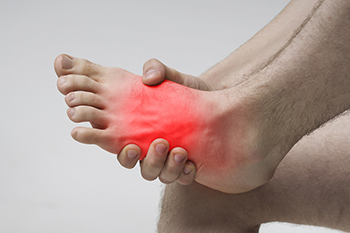June 2022
How Seniors Can Reduce the Risk of Falling

Falls are never fun and can be particularly dangerous for older people. The CDC reports that one in five falls leads to a serious injury, such as a broken bone or head injury. The fear of falling can also impact the quality of one’s life as it can prevent a person from being active and thriving. Because of these things, it is important for seniors and those caring for them to do what it is possible to prevent falls. Generally, older people fall more often than others due to lack of exercise, medication side effects, a health problem (such as diabetes causing low blood sugar episodes), poor vision, or things related to fall risks left unattended to in their homes. Practicing balance exercises, checking the home for hazards (like loose throw rugs or ice around the perimeter of a home), making sure shoes are flat, practical, and sturdy, and learning to use walking aids, such as canes, properly can all help in the prevention of falls. If you are a senior or caregiver and you or one you are watching over wants to learn more about specific fall risks and prevention, see a podiatrist for a customized examination and personalized plan.
Preventing falls among the elderly is very important. If you are older and have fallen or fear that you are prone to falling, consult with Dr. John C. Lawlor from Florida. Our doctor will assess your condition and provide you with quality advice and care.
Every 11 seconds, an elderly American is being treated in an emergency room for a fall related injury. Falls are the leading cause of head and hip injuries for those 65 and older. Due to decreases in strength, balance, senses, and lack of awareness, elderly persons are very susceptible to falling. Thankfully, there are a number of things older persons can do to prevent falls.
How to Prevent Falls
Some effective methods that older persons can do to prevent falls include:
- Enrolling in strength and balance exercise program to increase balance and strength
- Periodically having your sight and hearing checked
- Discuss any medications you have with a doctor to see if it increases the risk of falling
- Clearing the house of falling hazards and installing devices like grab bars and railings
- Utilizing a walker or cane
- Wearing shoes that provide good support and cushioning
- Talking to family members about falling and increasing awareness
Falling can be a traumatic and embarrassing experience for elderly persons; this can make them less willing to leave the house, and less willing to talk to someone about their fears of falling. Doing such things, however, will increase the likelihood of tripping or losing one’s balance. Knowing the causes of falling and how to prevent them is the best way to mitigate the risk of serious injury.
If you have any questions, please feel free to contact one of our our offices located in Cape Coral and LaBelle, FL . We offer the newest diagnostic and treatment technologies for all your foot care needs.
Why Is the Top of My Foot in Pain?

A variety of conditions may be responsible for causing pain in the top of your foot. You may have damaged soft tissue structures or even injured a bone. Symptoms may provide some clues as to the root of your foot pain. Severe, sudden pain may be due to a stress fracture of one or more of the bones of the foot, such as the metatarsals. If the pain worsens with activity, you may have extensor tendonitis. This occurs when the tendons on top of the foot that help you lift the toes become inflamed, due to wearing tight shoes, standing for a prolonged period or running on rugged terrain. Sinus tarsi syndrome is another type of severe top-of-foot pain that occurs in the tiny channel located between the ankle and the heel. It can occur after an ankle sprain or may result from chronic instability. If the pain in the top of your foot is burning or shooting, and is accompanied by a pins-and-needles or numbness, it may be due to a compressed nerve. Even though you experience symptoms in the foot, the actual damaged nerve may be pinched in the foot, legs, or lower back. If you notice a nodule under the skin on the top of the foot near a joint or tendon, it may be a ganglion cyst. These are just a few possible causes for pain on the top of the foot. To have your condition properly diagnosed and treated, visit a podiatrist, who is a physician specializing in foot and ankle care.
Foot Pain
Foot pain can be extremely painful and debilitating. If you have a foot pain, consult with Dr. John C. Lawlor from Florida. Our doctor will assess your condition and provide you with quality foot and ankle treatment.
Causes
Foot pain is a very broad condition that could be caused by one or more ailments. The most common include:
- Bunions
- Hammertoes
- Plantar Fasciitis
- Bone Spurs
- Corns
- Tarsal Tunnel Syndrome
- Ingrown Toenails
- Arthritis (such as Gout, Rheumatoid, and Osteoarthritis)
- Flat Feet
- Injury (from stress fractures, broken toe, foot, ankle, Achilles tendon ruptures, and sprains)
- And more
Diagnosis
To figure out the cause of foot pain, podiatrists utilize several different methods. This can range from simple visual inspections and sensation tests to X-rays and MRI scans. Prior medical history, family medical history, and any recent physical traumatic events will all be taken into consideration for a proper diagnosis.
Treatment
Treatment depends upon the cause of the foot pain. Whether it is resting, staying off the foot, or having surgery; podiatrists have a number of treatment options available for foot pain.
If you have any questions, please feel free to contact one of our our offices located in Cape Coral and LaBelle, FL . We offer the newest diagnostic and treatment technologies for all your foot care needs.
Gout Pain Can Be Managed
Ankle Structure and Conditions That Make It Painful

Among the many components that make up the ankle joint are three bones: the tibia, the fibula, and the talus. There is also cartilage that cushions these bones, and a series of ligaments and tendons that support and bind the ankle. Ankle pain can be caused by a variety of conditions, with an ankle sprain topping the list. This occurs when one or more of the ligaments in the ankle gets stretched beyond its normal limits, or even tears. Ankle strains are similar, but affect the muscles or tendons in the ankle. Fractures in one or more ankle bone(s) can also cause ankle pain, as can osteoarthritis, tarsal tunnel syndrome, tendonitis, bursitis, or Achilles tendon injuries. These are just a few of the conditions that may cause pain in the ankles. If you are experiencing pain, soreness, tenderness, instability, stiffness, immobility, swelling, warmth, or have any other discomfort in your ankle, it is a good idea to make an appointment with a podiatrist for an accurate diagnosis and proper treatment.
Ankle pain can have many different causes and the pain may potentially be serious. If you have ankle pain, consult with Dr. John C. Lawlor from Florida. Our doctor will assess your condition and provide you with quality foot and ankle treatment.
Ankle pain is any condition that causes pain in the ankle. Due to the fact that the ankle consists of tendons, muscles, bones, and ligaments, ankle pain can come from a number of different conditions.
Causes
The most common causes of ankle pain include:
- Types of arthritis (rheumatoid, osteoarthritis, and gout)
- Ankle sprains
- Broken ankles
- Achilles tendinitis
- Achilles tendon rupture
- Stress fractures
- Tarsal tunnel syndrome
- Plantar fasciitis
Symptoms
Symptoms of ankle injury vary based upon the condition. Pain may include general pain and discomfort, swelling, aching, redness, bruising, burning or stabbing sensations, and/or loss of sensation.
Diagnosis
Due to the wide variety of potential causes of ankle pain, podiatrists will utilize a number of different methods to properly diagnose ankle pain. This can include asking for personal and family medical histories and of any recent injuries. Further diagnosis may include sensation tests, a physical examination, and potentially x-rays or other imaging tests.
Treatment
Just as the range of causes varies widely, so do treatments. Some more common treatments are rest, ice packs, keeping pressure off the foot, orthotics and braces, medication for inflammation and pain, and surgery.
If you have any questions, please feel free to contact one of our our offices located in Cape Coral and LaBelle, FL . We offer the newest diagnostic and treatment technologies for all your foot care needs.
Healing From a Broken Ankle

A broken or fractured ankle happens when there is a partial or complete break in the ankle joint bones – the tibia, the fibula, and the talus bones. This can occur from excessive stress on the joint through heavy impact or twisting beyond the normal range of movement. The main symptom of a broken ankle is pain but swelling and bruising can also show at or around the site of the break. The ankle joint may be stiff and hard to move, and it might be hard for one with such a fracture to support their body weight. Recovery from a broken ankle will depend on how severe the break is and how well one follows the recommended care regimen. In most cases, recovery time is six to 12 weeks. If you think you have broken your ankle, visit a podiatrist to find out if there is an actual break and how it can best be treated.
Broken ankles need immediate treatment. If you are seeking treatment, contact Dr. John C. Lawlor from Florida. Our doctor can provide the care you need to keep you pain-free and on your feet.
Broken Ankles
A broken ankle is experienced when a person fractures their tibia or fibula in the lower leg and ankle area. Both of these bones are attached at the bottom of the leg and combine to form what we know to be our ankle.
When a physician is referring to a break of the ankle, he or she is usually referring to a break in the area where the tibia and fibula are joined to create our ankle joint. Ankles are more prone to fractures because the ankle is an area that suffers a lot of pressure and stress. There are some obvious signs when a person experiences a fractured ankle, and the following symptoms may be present.
Symptoms of a Fractured Ankle
- Excessive pain when the area is touched or when any pressure is placed on the ankle
- Swelling around the area
- Bruising of the area
- Area appears to be deformed
If you suspect an ankle fracture, it is recommended to seek treatment as soon as possible. The sooner you have your podiatrist diagnose the fracture, the quicker you’ll be on the way towards recovery.
If you have any questions, please feel free to contact one of our our offices located in Cape Coral and LaBelle, FL . We offer the newest diagnostic and treatment technologies for all your foot care needs.









